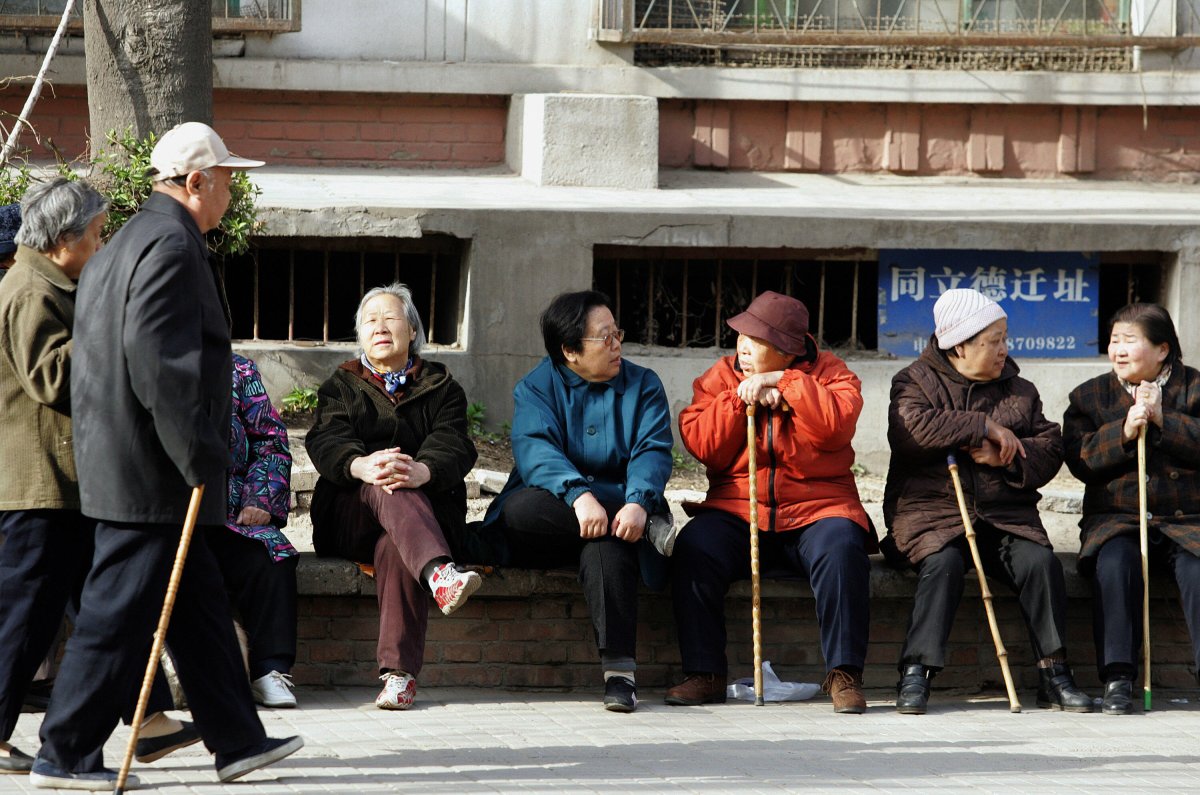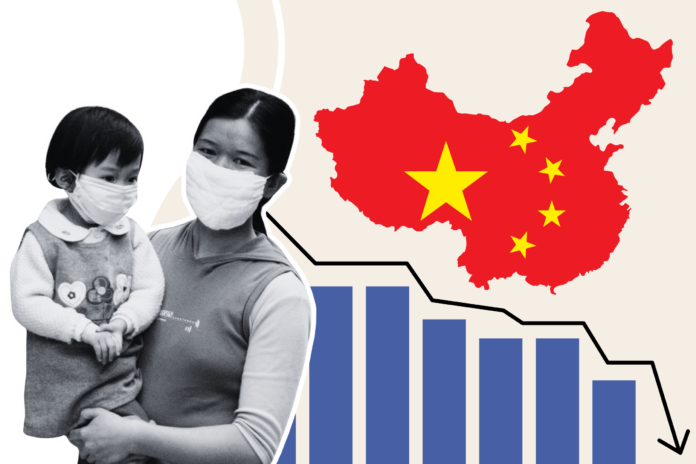For decades, China has tried to rein in its population growth, forcing families to have one child only—a controversial measure that caused terrible suffering to many. Now, as it faces a growing population decline, Beijing is trying to reverse what appears as an almost inevitable trend, including by limiting abortions.
In January 2023, China’s National Bureau of Statistics revealed that for the first time in decades, the country’s population had declined by roughly 850,000 people from the previous year and it was then standing at 1.41 billion. For a country whose massive workforce has helped push towards a rapid economic expansion, falling birth rates spells pessimism.
Wang Feng, a professor of sociology at the University of California, Irvine, and a leading expert on demography, aging and inequality, told Newsweek that the population decline in the world’s most populous country is historical and unprecedented.
Photo-illustration by Newsweek/Getty
“It is long-term, irreversible, and deep,” he said. “By one projection of the United Nations, by the end of this century China may have a population size that’s barely above half of what it is now,” he continued. “And along the way China will be joining the oldest populations in the world. In less than 30 years, by 2050, the median age of China’s population—half of the population—will reach over the age of 50, up from less than 40 at the turn of the century.”
In 2022, Beijing introduced new policies improving pre- and post-natal services, which it hoped would encourage people to have more children. But the measures are yet to reverse the demographic decline—and experts think they might not be enough.
How Did China Reach This Point?
The demographic shift in China is similar to what occurred in Western countries in recent decades. As child mortality decreased, people didn’t have as many kids, and as the cost of raising a child increased, many just gave up on having any as they were unable to afford them—especially Millennials, hit by two recessions during their lifetime.
The opening up of more options for women has also contributed to many choosing to remain child-free.
“More and more, young people do not want to have kids or even marry,” Susan Greenhalgh, research professor of Chinese society at the Fairbank Center for Chinese Studies at Harvard University, told Newsweek.
“The cost of raising a child is exorbitant—it’s the second highest in the world, after South Korea—and for women, who already bear the burden and time demands of childcare, having two would mean losing their jobs, income, and the freedom that came with having only one child early,” she continued.
Since the introduction of the two-child policy in 2016, which reversed the previous one-child policy, Chinese women have been discriminated against in the workplace “because employers now assume any woman worker might have two or three kids and will be too costly to keep on board,” Greenhalgh said.
“The new policies are asking young women to pay the price of re-engineering society to meet the new needs.” Last year, there were 37 million more men than women in China—adding to the gender imbalance in the country.
China is now trying to boost birth rates by making fertility treatment more accessible, but, according to Greenhalgh, the demographic decline in the country is likely to continue unless the government takes more effective measures to counter it.
What’s the Impact of This Decline?
As China’s population size helped boost the country’s incredible development in the past decades, it’s widely expected that its demographic decline will negatively impact its economy.
“China’s meteoric economic rise has fortuitously benefited from the existence of a large reservoir of healthy and literary young labor force, eager to transform their lives by moving from the countryside to cities,” Wang said. “That process is largely over and is non-repeatable.”
China is facing a critical economic downturn due to weaker trade, slowing domestic spending and an ongoing crisis in its property sector.
The country’s aging workforce and its “uber-low fertility level” are of particular concern for the future of the country and its financial sustainability, Greenhalgh said, as they might contribute to a potential labor shortage.
“China’s current 1.08 children per woman (the TFR) falls far below the 2.1 needed to replace the population,” she explained. “Already China is very concerned about who will support the elderly. If each couple has only one child, who will care for China’s seniors? China’s government does not want to pay the full cost of old-age support, preferring to ask families to perform their traditional roles of caring for the elderly.”

AFP/AFP via Getty Images
What’s Beijing Doing About It?
“The Chinese government is clearly very concerned with this unexpected rapid fertility decline, even after lifting the infamous one-child policy. Yet, the very low fertility is deeply rooted in the economic and social structure of the country, and no easy recipe can be used to stop the decline,” Wang said.
According to Greenhalgh, Beijing has been aware of the problem since 2013, when the government first adjusted the one-child policy to allow couples in which one party is a singleton to have two children.
“In 2015 it [the Chinese Communist Party leadership] issued the universal two-child policy, allowing all couples to have two children starting on January 1, 2016,” Greenhalgh said. “When the fertility bump turned out to be temporary, in May 2021, after seeing new census data, it altered its policy once more to say that ‘all couples are allowed to have three’ and to introduce a very large number and variety of ‘supportive measures’ to boost fertility,” she continued.
“In 2021, it changed the Population and Birth Planning Law to accord with the demands of the new policy. Since all official actions are now supposed to be law-based, that is a big development.”
Along with the new policies, the Chinese government has also been trying to foster a “culture of marriage and childbearing for the new era,” as leader Xi Jinping called it, “to encourage young women to go home and become full-time child bearers and rearers, as wall as carers for the family’s senior members,” Greenhalgh said.
According to the research professor, China is now trying to re-traditionalize culture and society “to create a nation that looks much more traditional, with women in charge of affairs in the home and men taking on the role of breadwinner.”
Beijing has already passed new policies limiting abortions that are “not medically necessary,” Greenlagh explained, meaning that abortions performed after the sex of the fetus is determined are limited to avoid people trying to get a child of their preferred sex.
“Some localities have refused to allow men to have sterilization procedures, vasectomies, suggesting that around the country local officials believe that national policy now calls for limiting contraceptive procedures in order to encourage as many births as possible,” Greenhalgh said.
Abortion has been legal since 1957 in China. During the decades of the one-child policy, from 1980 to 2015, women were even forced by local government authorities to abort “illegal” pregnancies.
Asked if the Beijing leadership would go as far as banning abortion in the country, Wang said that it is “hardly imaginable” for the government to go that far. “China today is also a highly educated society, with young people especially young women keenly aware of their rights. Going against the popular will can be a political suicide,” he said.
Uncommon Knowledge
Newsweek is committed to challenging conventional wisdom and finding connections in the search for common ground.
Newsweek is committed to challenging conventional wisdom and finding connections in the search for common ground.


